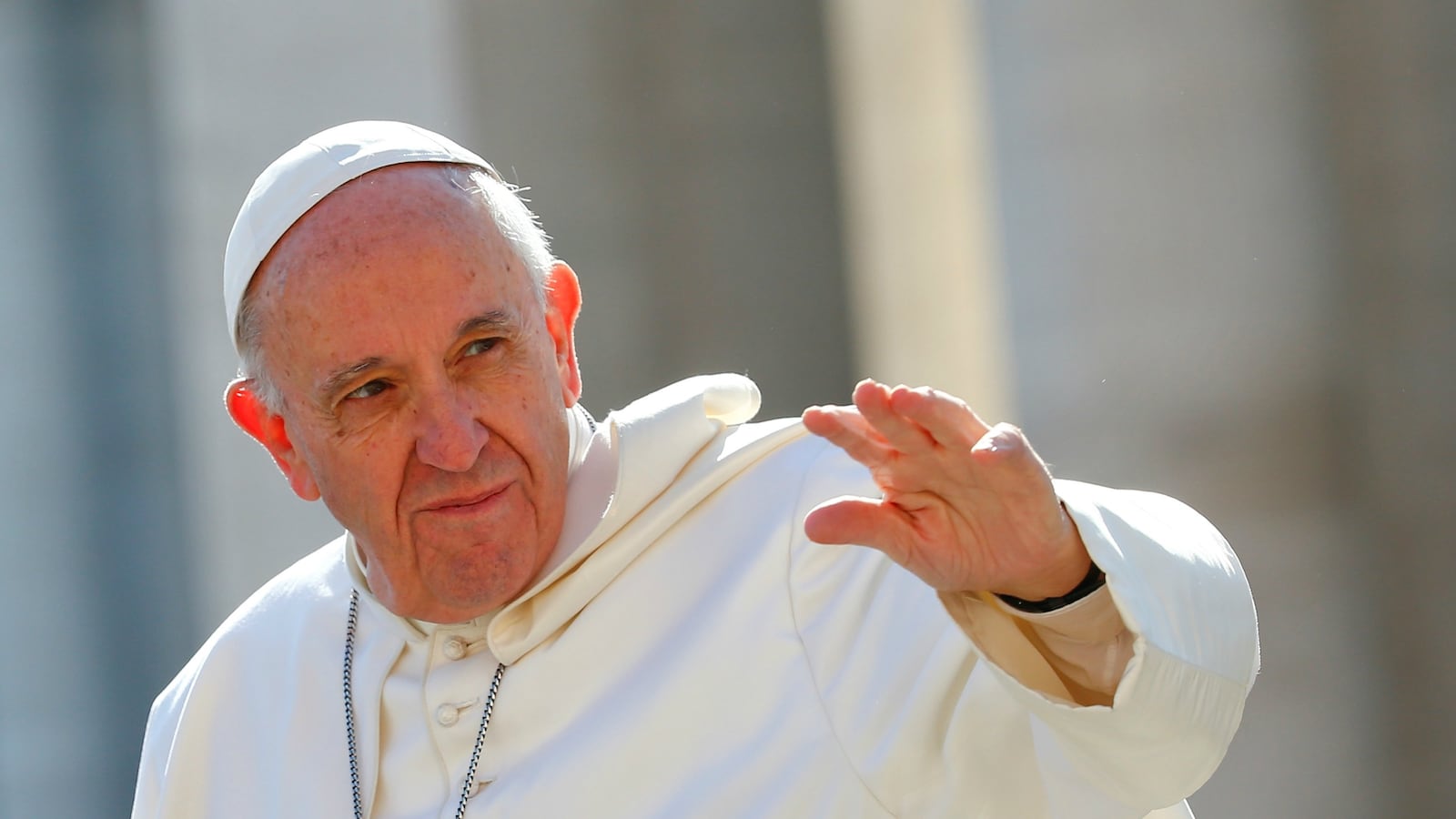ROME—Sometimes it’s hard to know just where the Catholic Church stands when it comes to the devil. Obviously the Church is against evil and sin, but it has been decades since a pope has been as candid about Satan himself as Pope Francis is.
Rather than referring to the actual devil, Pope Benedict XVI often used theology in his teachings on evil. Before that, John Paul II even sidelined the Vatican’s official office of the Devil’s Advocate, which was tasked with digging up dirt on would-be saints headed for canonization.
Not so with Pope Francis, who seems to be giving the devil his due.
On Friday, in an address to a group of priests at a Vatican workshop meant to bolster the skillset of a good confessor, Francis told them they “should not hesitate” to call on a Vatican-trained exorcist should they need one.
Cautioning on the common confusion between mental illness and true demon possession, he said priests should first consult psychiatric specialists, but not to rule out exorcism as a form of treatment.
Speaking from notes published on the Vatican website, Francis cautioned that “discernment” is key to understanding whether the person on the other side of the confessional wall is possessed or psychotic.
“They could also have spiritual disturbances, whose nature should be submitted to careful discernment, taking into account all the existential, ecclesial, natural and supernatural circumstances,” Francis said. “When the confessor becomes aware of the presence of genuine spiritual disturbances – that may be in large part psychic, and therefore must be confirmed by means of healthy collaboration with the human sciences – he must not hesitate to refer the issue to those who, in the diocese, are charged with this delicate and necessary ministry, namely, exorcists.”
The use of exorcism in what is perceived as demon possession has long been criticized by the mental health community, which cautions that ignoring mental illness can be detrimental to the patient. The Vatican upgraded its rules on exorcism in 1999, making it mandatory to consult mental health care experts when dealing with a person exhibiting signs of what had been traditionally assumed to be devil possession.
Vatican exorcist Father Cipriano de Meo argues that it is fairly easy for a seasoned exorcist to spot the difference. He says that a skilled exorcist will notice that during a prayer session with the potentially possessed, the ‘adversary’ or devil that is present will let the exorcist know he’s there.
“A possessed person has various general attitudes towards an exorcist, who is seen by the Adversary as an enemy ready to fight him,” he told Catholic news service ACI. “There's no lack of frightening facial expressions, threatening words or gestures and other things, but especially blasphemies against God and Our Lady.”
The Catholic Church teaching makes the distinction. “Exorcism is directed at the expulsion of demons or to the liberation from demonic possession through the spiritual authority which Jesus entrusted to his Church,” according to the Catholic Catechism teaching on the topic. “Illness, especially psychological illness, is a very different matter; treating this is the concern of medical science. Therefore, before an exorcism is performed, it is important to ascertain that one is dealing with the presence of the Evil One, and not an illness.”
Still, the exorcism rite is hardly like it is depicted in pop culture. The Catholic Church Book of Rites says that the exorcist must first go to confession to clear his own soul, thereby not offering any competition in the way of an unclean soul for the devil during the ritual. Then, wearing a purple stole over a simple tunic, he sprinkles himself and the possessed person with holy water and recites a list of prayers including the Litany of the Saints and others before reciting the final devil-be-gone prayer that starts with, “I cast you out, unclean spirit, along with every Satanic power of the enemy, every specter from hell, and all your fell companions…”
The rite can be repeated as often as is necessary and the Church advises supplemental prayer to keep the devil away for good.






